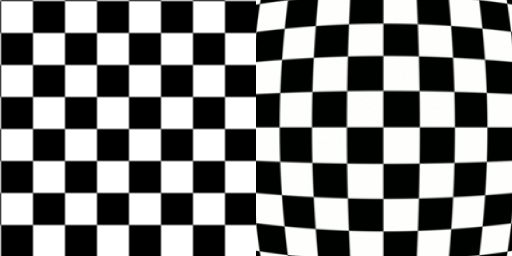Globe effect on:
[Wikipedia]
[Google]
[Amazon]
 The globe effect, sometimes called the rolling ball effect or the spinning globe effect, is an
The globe effect, sometimes called the rolling ball effect or the spinning globe effect, is an
Distortion and globe effect in binoculars
 The globe effect, sometimes called the rolling ball effect or the spinning globe effect, is an
The globe effect, sometimes called the rolling ball effect or the spinning globe effect, is an optical
Optics is the branch of physics that studies the behaviour and properties of light, including its interactions with matter and the construction of instruments that use or detect it. Optics usually describes the behaviour of visible, ultraviole ...
phenomenon—perhaps partially an optical illusion
Within visual perception, an optical illusion (also called a visual illusion) is an illusion caused by the visual system and characterized by a visual perception, percept that arguably appears to differ from reality. Illusions come in a wide v ...
—that occurs with visual optical instrument
An optical instrument (or "optic" for short) is a device that processes light waves (or photons), either to enhance an image for viewing or to analyze and determine their characteristic properties. Common examples include periscopes, microscopes ...
s, in particular binoculars
Binoculars or field glasses are two refracting telescopes mounted side-by-side and aligned to point in the same direction, allowing the viewer to use both eyes (binocular vision) when viewing distant objects. Most binoculars are sized to be held ...
and telescopes
A telescope is a device used to observe distant objects by their emission, absorption, or reflection of electromagnetic radiation. Originally meaning only an optical instrument using lenses, curved mirrors, or a combination of both to observe ...
, that are designed to be free of distortion
In signal processing, distortion is the alteration of the original shape (or other characteristic) of a signal. In communications and electronics it means the alteration of the waveform of an information-bearing signal, such as an audio signal ...
. When these instruments are panned, the moving image appears to roll over a curved, convex surface. In 1949, Horst Koehler at Zeiss (Jena) suggested adding some pincushion distortion
In geometric optics, distortion is a deviation from rectilinear projection; a projection in which straight lines in a scene remain straight in an image. It is a form of optical aberration.
Radial distortion
Although distortion can be irregu ...
to the optical design to eliminate the globe effect.H. Koehler, "Grundsaetzliches zum Fernrohrsehen", ''Deutsche Optische Wochenschrift'' 35, Vol. 6, p. 41 (1949). August Sonnefeld conducted experiments with volunteers, which supported the claim that a supplementary distortion could improve the imaging of visual optical instruments. Since that time, most binocular manufacturers have followed Zeiss's example and added pincushion distortion to their optical design
Optical lens design is the process of designing a lens to meet a set of performance requirements and constraints, including cost and manufacturing limitations. Parameters include surface profile types (spherical, aspheric, holographic, diffractive, ...
.
The origin of the globe effect initially remained unclear after its discovery in the first half of the past century. Koehler speculated about an "unnatural perspective generated by the binocular while panning over a three dimensional scenery", thereby ignoring the fact that the globe effect was observable at the night sky as well, where perspective distortions were absent.
Recently, the globe effect has been linked to the peculiar properties of human visual perception
Visual perception is the ability to interpret the surrounding environment through photopic vision (daytime vision), color vision, scotopic vision (night vision), and mesopic vision (twilight vision), using light in the visible spectrum reflecte ...
, which adds a certain amount of barrel distortion
In geometric optics, distortion is a deviation from rectilinear projection; a projection in which straight lines in a scene remain straight in an image. It is a form of aberration in optical systems, optical aberration.
Radial distortion
Al ...
to the visual field
The visual field is the "spatial array of visual sensations available to observation in introspectionist psychological experiments". Or simply, visual field can be defined as the entire area that can be seen when an eye is fixed straight at a point ...
. The amount of barrel distortion is subject to individual differences, which explains the fact that the perceived intensity of the globe effect varies significantly between different observers.
An alternative approachErklärung des Globuseffekts, Walter E. Schön, http://www.juelich-bonn.com/jForum/read.php?9,288850,288850#msg-288850 for explaining the globe effect comes from the technical journalist and optics specialist Walter E. Schön. He states that the observed effect is in fact not that of a rolling globe but that of a vertically rotating cylinder. The globe shape of the illusion seen by most observers is only because the field of view through the optical device is circular. This illusion of a rotating cylinder during panning is caused by the horizontal movement of the image being (due to the angular magnification of the device) faster and more uniform (with less parallax) compared to the naked eye and also not corresponding to the felt rotational speed of the observer's head. When the brain tries to integrate these conflicting signals, it creates the perception that the image is moving slower at the left and right edges than in the middle, giving the illusion of a rotating cylinder.
References
Bibliography
*External links
Distortion and globe effect in binoculars
See also
*geometrical optics
Geometrical optics, or ray optics, is a model of optics that describes light propagation in terms of ''rays''. The ray in geometrical optics is an abstraction useful for approximating the paths along which light propagates under certain circumstan ...
{{DEFAULTSORT:Globe Effect
Optical phenomena